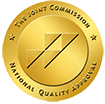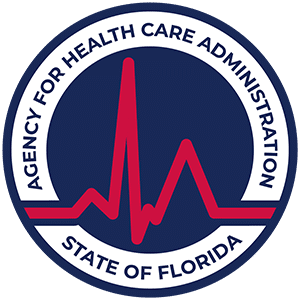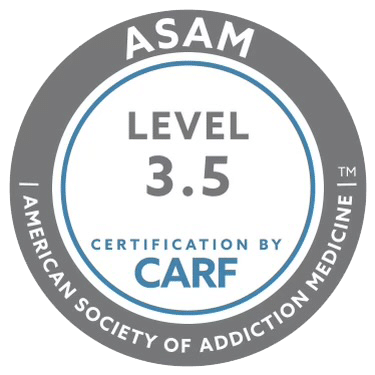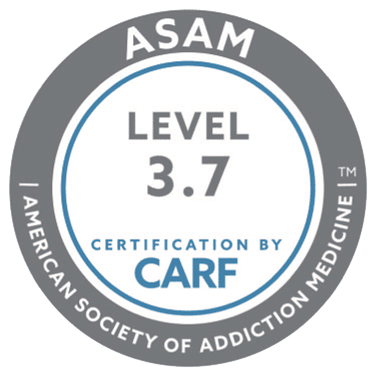Due to their widespread availability, benzodiazepines are chronically misused and abused.
Benzodiazepines are among the most commonly prescribed medications in the world, with millions of prescriptions written each year.

In the United States alone, over 30 million prescriptions for benzodiazepines are issued annually. Of this, more than 17% of prescriptions are misused.
The Drug Abuse Warning Network reveals that all 73% of drug-related ER visits in 2022 involved benzodiazepines. In that same year, benzodiazepines were involved in approximately 30% of all overdose deaths.
This article discusses everything you need to know about benzodiazepine addiction. We’ll cover what benzodiazepines are, common brands, medical uses, withdrawal symptoms, and treatment options.
What Are Benzodiazepines, And How Do They Work?
Benzodiazepines, commonly known as benzos or downers, are a class of psychoactive depressants that slow down the activity in the brain and nervous system. They’re notorious for their sedative, hypnotic, and anxiolytic (anti-anxiety) effects.
Benzodiazepines are often prescribed to treat the following conditions:
- Anxiety disorder
- Panic disorder
- Muscle spasms (i.e., epilepsy, seizures)
- Restless legs syndrome
- Stress
- Insomnia
- Obsessive-compulsive disorder (OCD)
- Breathlessness (shortness of breath) in advanced diseases
- Alcohol withdrawal
In medical settings, doctors use benzodiazepines in conjunction with other medications, such as opioids and intravenous anesthetics, to induce deep sedation. This combination of drugs ensures the patient remains unconscious and pain-free throughout the surgery.
Outside medical situations, benzodiazepines are abused for their euphoric effects. They’re also taken alongside other CNS depressant drugs, like antipsychotics and opioids, to either enhance their effects or stave off withdrawal.
Benzodiazepines have also been reportedly used as a date rape drug because of its potent sedative effects. Unsavory individuals surreptitiously administer the drug to incapacitate their victims, rendering them unconscious or severely impairing their ability to resist sexual assault.
Common Benzodiazepine Brands
There are more than 2,000 different brands of benzodiazepines but only 15 are approved by the FDA. They’re categorized into three groups: ultra-short-acting, short-acting, and long-acting.
Ultra-Short Acting
Ultra-short-acting benzos work quickly but also wear off quickly. They’re mostly used for rapid sedation or anesthesia.
Examples of ultra-short-acting benzos include Midazolam (Versed) and Triazolam (Halcion).
Short-Acting
Short-acting benzos kick in relatively quickly (within 30 to 60 minutes) and have effects lasting for several hours (3 to 8 hours), making them effective for anxiety disorders and short-term insomnia.
Medications like Alprazolam (Xanax), Lorazepam (Ativan), Oxazepam (Serax), and Temazepam (Restoril) fall under this category.
Long-Acting
Long-acting benzos have a slower onset but much longer-lasting effects, sometimes up to a day or more. They’re prescribed for severe anxiety or seizures, and taken only when absolutely necessary.
Examples include Diazepam (Valium), Chlordiazepoxide (Librium), Clonazepam (Klonopin), Flurazepam (Dalmane), and Quazepam (Doral).
Other Names for Benzodiazepine
Outside medical settings, you may hear benzodiazepine being sold under the following pseudonyms:
- Xannies
- Vallies
- Roofies
- Mexican
- Goofballs
- Heavenly Blues
- Tranks
- Roach
- Valo
- Club drugs
- Anxiety drugs
Are Benzodiazepines Legal?
Benzodiazepines are controlled substances, meaning it’s illegal to use without a doctor’s prescription.
Prescription benzodiazepines are classified as Schedule IV drugs, with a low potential for abuse and a low risk of dependence.
However, synthetic benzodiazepines, also known as “designer,” “novel,” or “street” benzos, are classed under Schedule I due to their high potential for abuse and dependence.
These substances aren’t approved for medical use. They’re manufactured in a way that mimics the chemical structure of traditional benzodiazepines but with slight modifications to strengthen their effects.
Synthetic benzodiazepines are illegal. Brand names include:
- Clonazolam
- Flualprazolam
- Diclazepam
- Lubromazolam
- Etizolam
What Are the Behavioral Signs of Benzodiazepine Addiction?
Benzodiazepines are highly addictive.
Even at low doses, prolonged use can lead to physical dependence and tolerance.
The first step to addiction treatment is recognizing the problem. Acknowledging that there’s an issue allows people suffering from benzo addiction to seek help and access the necessary resources for recovery.
Here are some of the most common symptoms of benzo addiction:
- Taking more than what’s prescribed because it’s not having the same effect that it once did
- Running out of the prescription too early
- Intense craving for the drug whenever the effects wear off
- Continued use despite experiencing negative physical, psychological, or social consequences
- Withdrawing from social activities or hobbies in favor of benzodiazepine use
- Social or occupational impairment (neglecting responsibilities at work, school, or home due to benzodiazepine use)
- Change in mood, behavior, or personality, such as increased irritability or mood swings
- Reduction in hygiene or grooming
Benzodiazepines are rarely injected and instead taken orally or crushed and snorted. As such, it can be difficult to notice the physical warning signs of benzodiazepine misuse early on.
If you or someone you love display any of the symptoms mentioned above, seek guidance from a healthcare professional or contact a drug abuse helpline.
A good place to start is the Substance Abuse and Mental Health Administration (SAMSA) national hotline at 1-800-662-HELP (4357) or TTY 1-800-487-4889.
SAMSA is a free, 24-hour treatment referral and information service available in both English and Spanish. Specialists can offer valuable information about treatment options, insurance coverage, and support services available in your community.
What Are the Symptoms of Benzodiazepine Withdrawal?
The symptoms of benzodiazepine withdrawal are often similar to that of alcohol or opioid withdrawal. They can vary in intensity depending on factors like the duration of use, dosage taken, and genetic sensitivity.
Common symptoms include:
- Anxiety
- Sleep problems and/or recurring nightmares
- Irritability
- Stomach cramps
- Loss of appetite
- Loss of sex drive
- Depression
- Nausea and vomiting
- Sensory disturbances (e.g., heightened sensitivity to light or sound)
- Increased heart rate or palpitations
- Headaches
- Sweating
In severe cases, individuals suffering from withdrawal symptoms may experience hallucinations or delusions, depersonalization or derealization (feeling disconnected from oneself or surroundings), and seizures.
Though they rarely cause serious illness or death by themselves, benzodiazepine taken in conjunction with alcohol or other drugs can lead to an increased risk of overdose, respiratory depression, coma, and death.
Benzodiazepine Withdrawal Timeline
The withdrawal timeline for benzodiazepine differs from person to person. Generally, though, here’s what to expect:
| Duration | Symptoms |
| 6 to 8 hours | Insomnia, anxiety |
| 12 to 24 hours | Increased anxiety, restlessness |
| 1 to 3 days | Heightened anxiety, insomnia, irritability |
| 4 to 7 days | Persistence of anxiety, insomnia, muscle tension |
| 1 to 4 weeks | Gradual reduction of symptoms, but may still experience lingering effects of anxiety and insomnia |
| Several weeks to months | Residual symptoms may persist, but gradually improve over time |
How Is Benzodiazepine Addiction Treated?
Benzodiazepine addiction treatment focuses on two main goals: safely tapering off the medication and addressing the underlying causes of the addiction.
Medically-Assisted Detoxification
Quitting benzodiazepines cold turkey can lead to a range of issues, some of which can be fatal.
To minimize the risk of severe withdrawal reactions, medical professionals gradually taper benzodiazepine dosage over time. This approach allows the body to adjust to decreasing levels of the medication, reducing the risk of complications.
Detox can take anywhere from a few days to several years, depending on how long the substance was used, the frequency of use, and the severity of use.
Behavioral Therapy
Cognitive-behavioral therapy (CBT) and dialectical behavior therapy (DBT) play a crucial role in the treatment of benzodiazepine addiction.
CBT identifies and challenges negative thought patterns and beliefs that contribute to addictive behaviors. Meanwhile, DBT incorporates mindfulness techniques, emotion regulation strategies, and interpersonal skills to improve a patient’s ability to cope during treatment.
Medically-Assisted Treatment
Benzo addiction doesn’t always require a taper method to help patients recover.
Sometimes, health professionals deem it more necessary to prescribe alternative medications such as beta-blockers, antidepressants, and non-benzodiazepine anticonvulsants (NBACs) to manage withdrawal symptoms and underlying conditions.
Beta-blockers help alleviate symptoms of anxiety and stress, while antidepressants address mood disturbances that accompany benzodiazepine withdrawal.
NBACs, such as Gabapentin, Carbamazepine, and Pregabalin, reduce the risk of seizures during the withdrawal process. These medications are particularly effective on people who have yet to develop a high degree of dependency on the drug.
Peer Support Groups
Peer support groups help people in recovery stay on track and maintain their sobriety.
These groups aim to provide individuals with a supportive and understanding environment where they can safely share their experiences, struggles, and triumphs with others who live (or have lived) similar lives.
Knowing that they’re not alone and that others are rooting for their success toward recovery encourages people suffering from addiction to resist the urge to relapse.
Peer support groups are often free of charge. They’re run by trained peers but don’t give advice or act as professionals.
You can find your nearest support group by visiting the Mental Health American Affiliate Resource Center and entering your city or zip code.
If you’re unable to physically visit a support group, some organizations offer online support in the form of discussion boards, blogs, and online communities.
Final Thoughts
Benzo addiction can be a devastating and life-altering condition that affects sufferers physically, mentally, and emotionally.
Due to its widespread availability, benzodiazepine addiction can affect individuals of all ages and backgrounds.
If you or a loved one is suffering from such addiction, help is available.
Treatment includes detoxification, behavioral therapy, and peer support, among others.







